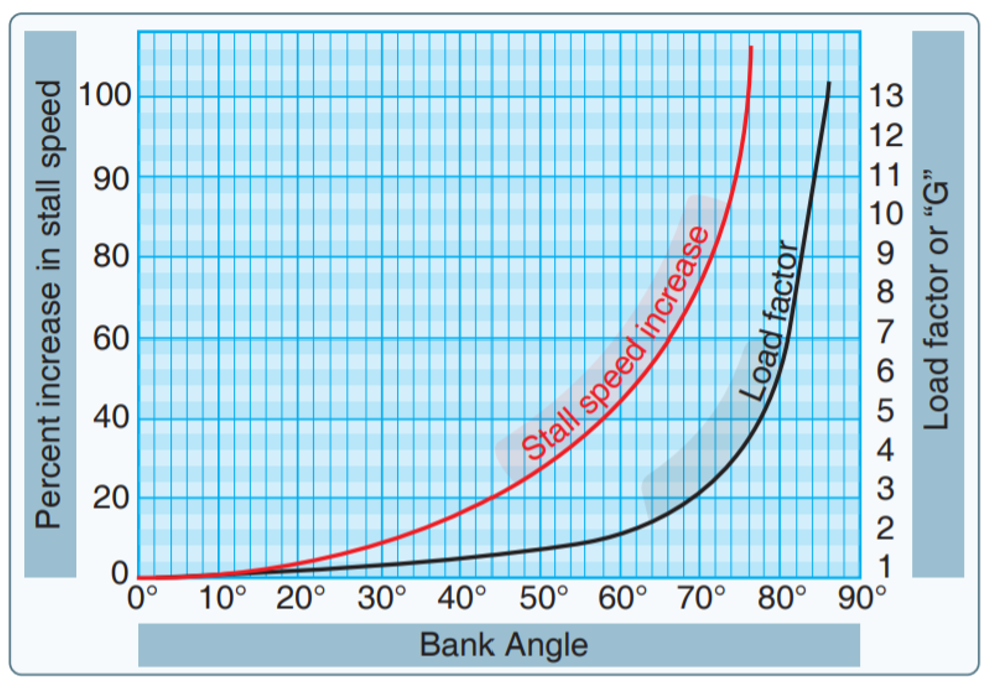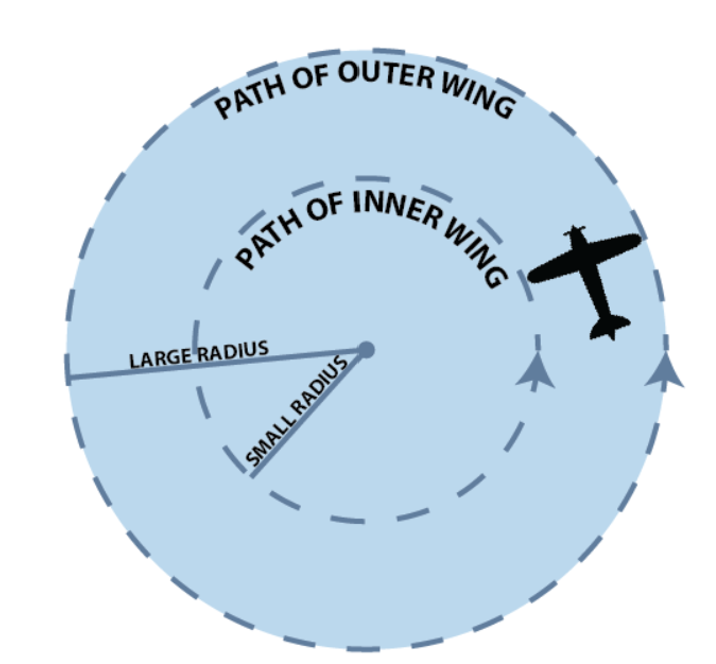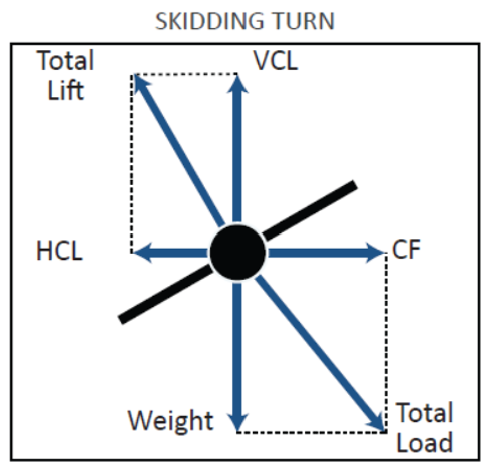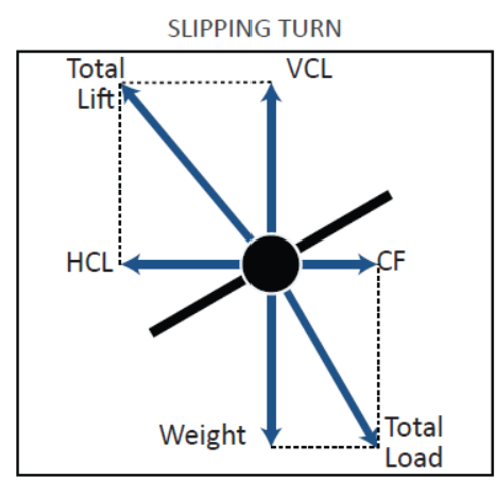Task IX.A: Steep Turns
Lesson Overview
- Objective
-
The student should develop knowledge of the elements related to steep turns (load factors, torque, adverse yaw, and the overbanking tendency). The student should have the ability to perform a steep turn as required in the ACS/PTS.
- Reference
-
-
Aircraft Flight Manual / Pilot’s Operating Handbook
-
Airplane Flying Handbook - Chapter 9-2
-
- Key Elements
-
-
Overbanking Tendency
-
Coordination
-
Increased back pressure and thrust
-
Maintain altitude with elevators and/or bank angle
-
- Elements
-
-
Maximum Performance Turn
-
The Science Behind It
-
Performing the Steep Turn
-
- Equipment
-
-
White board and markers
-
References
-
iPad
-
- Instructor Actions
-
-
Discuss lesson objectives
-
Present Lecture
-
Ask and Answer Questions
-
Assign homework
-
- Student Actions
-
-
Participate in discussion
-
Take notes
-
Ask and respond to questions
-
- Schedule
-
-
Discuss Objectives
-
Review material
-
Development
-
Conclusion
-
- Completion Standards
-
The student understands the characteristics behind the factors involved in the steep turn and can properly perform them in both directions maintaining altitude and airspeed.
Instructor Notes
- Attention
-
Steep turns - the first really fun maneuver! Steep banks, you feel some G’s and you’re staring at the ground out the side window!
- Overview
-
Review Objectives and Elements/Key ideas
- What
-
The steep turn maneuver consists of a constant altitude turn in either direction, using a bank angle between 45° to 60° (45° - Private, or 50° - Commercial). This will cause an overbanking tendency during which maximum turning performance is attained and relatively high load factors are imposed.
- Why
-
Steep turns develop smoothness, coordination, orientation, division of attention, and control techniques necessary for the execution of maximum performance turns. The pilot also understands the effects of the over banking tendency and how to counteract it.
Lesson Details
Maximum Performance Turn
An airplane’s maximum turning performance is its fastest rate of turn and shortest radius of turn.
-
This changes with both airspeed and angle of bank
-
The higher the airspeed, the bigger the radius
-
The higher the bank angle, the smaller the radius
-
In addition to other factors, the maximum bank angle is determined by the limiting load factor which can be maintained without stalling or exceeding the airplane’s structural limitations.
-
In most small airplanes the max bank is approx. 50o to 60o
The Science Behind It
What makes an airplane turn?
As an aircraft banks lift is divided into a horizontal as well as a vertical component
-
The horizontal component of lift pulls the aircraft through the turn
-
The vertical component of lift must be increased in order to maintain altitude
Bank Angle, Load Factor and Stall Speed
Basics
-
As bank angle increases, the load factor increases and so does stall speed
-
Assuming level flight
-
The opposite also applies — decreasing bank angle decreases load factor and stall speed
-
Load Factors
-
As bank increases beyond 45o, the loads on the aircraft increase rapidly
-
At a 60o bank, a load factor of 2 Gs are imposed on the aircraft structure
-
At a 70o bank, a load factor of approximately 3 Gs are placed on the aircraft
-
Most general aviation airplanes are stressed for approximately 3.8 Gs
-
-
-
Regardless of the airspeed or type of aircraft involved, a given angle of bank in a turn, during which altitude is maintained, will always produce the same load factor
-
Ex: 60o of bank will always produce 2 G’s, irrespective of airspeed, aircraft, power setting, etc.
-

Stall Speed
-
As we mentioned, increased bank leads to increased load factors, and increased load factor leads to an increased stall speed
-
The stall speed increases in proportion to the square root of the load factor
-
Ex: An aircraft will a normal stall speed of 50 knots in a 3G turn will stall at approximately 85 knots
-
-
Thus, it’s very important to recognize and understand the relationship between bank angle and stall speed, especially in a steep turn

Adverse Yaw
In a turn, the downward deflected aileron (raised wing) produces more lift, and therefore more drag than the upward deflected aileron (lowered wing)
This added drag yaws the airplane’s nose in the direction of the raised wing (opposite the turn)
Rudder is used to counteract adverse yaw
The slower the aircraft and the larger the aileron deflection, the more rudder required to maintain coordination
-
At slower speeds the rudder is less effective
-
Increased aileron deflection leads to increased lift on the raised wing which results in greater drag (adverse yaw)
Torque Effect (left rolling tendency)
Newton’s 3rd Law — every action has an equal and opposite reaction.
-
The internal engine parts and propeller are revolving in one direction (clockwise from the pilot’s perspective), an equal force is trying to rotate the airplane in the opposite direction (counterclockwise, or left, from the pilot’s perspective)
-
This force acts around the longitudinal axis, tending to make the airplane roll to the left
-
The faster the engine/prop are spinning, the stronger the left turning tendency
-
Torque Effect in Turns
Torque is based on the speed the engine/propeller are rotating.
-
the higher the power setting, the greater the turning tendency
-
Takeoff, for example, is when the turning tendency is most pronounced
-
Most small aircraft combat the torque effect in cruise flight through trim tabs (whether adjusted in the cockpit by the pilot or via tabs mounted on the wings).
-
This is done to prevent having to hold right aileron pressure while cruising. Because of this, torque effect is generally negligible during a steep turn
-
Large changes in power would increase or decrease torque effect and require corresponding aileron adjustments
-
Left Turn
-
Torque, as a left rolling tendency, encourages a left turn
-
Large power changes would require the pilot to adjust aileron input to maintain the desired bank angle
-
-
Torque combined with the other left turning tendencies can result in a skid in a left turn
-
Increase right rudder or reduce left rudder to counteract the skid
-
|
|
Right Turn
-
Torque, as a left rolling tendency, discourages a right turn
-
Large power changes would require the pilot to adjust aileron input to maintain the desired bank angle
-
-
Torque combined with the other left turning tendencies can result in a slip in a right turn
-
Increase right rudder or decrease left rudder to counteract the slip
-
Overbanking Tendency
During any turn, the wing on the outside of the turn travels a longer path relative to the wing on the inside of the turn
As the radius of a turn becomes smaller, a significant difference develops between these two paths. Although the outside wing is traveling a farther distance (larger circle) than the inside wing, both wings complete the circle in the same amount of time. Therefore, the outside wing is moving faster than the inside wing
-
The smaller the radius of the turn, the faster the outside wing is moving relative to the inside wing
-
Circumference of a Circle = 2πR (Pi * Radius)
-
The larger the radius, the larger the circumference or distance the wing travels
-
The outer wing of the turn will always have a larger radius and therefore travel a farther distance in the same amount of time
-
Because the outside wing is traveling faster than the inside wing, it also develops more lift
-
This creates an overbanking tendency that must be controlled by using aileron in the opposite direction of the turn
-
This also creates more drag on the outside wing which results in a slight slip that must be corrected with rudder

Overbanking and Stability
The overbanking tendency doesn’t occur during every turn due to the inherent stability characteristics built into the aircraft
-
Things such as dihedral, sweepback, keel effect, etc.
-
Although it varies, most general aviation aircraft exhibit some level of positive static stability
-
During a low bank turn, the aircraft’s positive static stability outweighs the relatively small difference in speed between the outer and inner wings and the aircraft has a tendency to return to wings level flight.
-
Aileron must be held in the direction of the turn to maintain the bank.
-
During a medium banked turn, the aircraft’s stability balances with the excess lift generated by the outside wing.
-
During a steep turn, the lift generated by the fast moving outer wing is too great for the stability of the aircraft and the aircraft continues to roll into the turn
Performing the Steep Turn
Before Starting
-
Pre-maneuver checklist
-
Select an altitude
-
No Lower than 1,500’AGL
-
-
Ensure the area is clear of traffic
-
Establish the manufacturer’s recommended entry airspeed or an airspeed that does not exceed the design maneuvering speed (Va)
-
Ensure the aircraft is in straight and level flight, and trimmed
Entering the Turn
-
Note the entry heading/a visual reference to roll out on
-
Smoothly roll into the desired bank angle
-
As the turn is established, generally around 30 degrees of bank, smoothly introduce back elevator pressure to increase the angle of attack
-
Power must be added to maintain the entry altitude and airspeed
During the Turn
-
Do not focus or stare at any one object
-
Adjustments
-
Relax or increase elevator pressure as appropriate
-
Changes in bank angle may also be used to control altitude deviations
-
If the aircraft is descending and bank angle is excessive, reducing the bank angle may stop the descent
-
[WARNING] Common Error - Improper procedure in correcting altitude deviations Common Error - Uncoordinated use of flight controls
Rolling out of the Turn
-
The rollout should be timed so that the wings reach level flight when the airplane is exactly on the heading from which the maneuver was started
-
While the rollout is being made, back-elevator pressure is gradually released and power reduced, as necessary, to maintain altitude and airspeed
Common Errors
-
Improper pitch, bank, and power coordination during entry and rollout
-
Uncoordinated use of flight controls
-
Improper procedure in correcting altitude deviations
-
Loss of orientation
Conclusion
-
Brief review of the main points
In maintaining a properly coordinated steep turn, the pilot must use opposite aileron to maintain bank. Pitch should be controlled by adjusting elevator back pressure and bank angle. A smaller bank angle will result in more lift while an increased bank angle will reduce the lift. Maintaining coordination is very important and should be watched carefully throughout the maneuver.
ACS Requirements
CFI PTS
To determine that the applicant:
-
Exhibits instructional knowledge of the elements of steep turns by describing:
-
Relationship of bank angle, load factor, and stalling speed.
-
Overbanking tendency.
-
Torque effect in right and left turns.
-
Selection of a suitable altitude.
-
Orientation, division of attention, and planning.
-
Entry and rollout procedure.
-
Coordination of flight and power controls.
-
Altitude, bank, and power control during the turn.
-
Proper recovery to straight-and-level flight.
-
-
Exhibits instructional knowledge of common errors related to steep turns by describing:
-
Improper pitch, bank, and power coordination during entry and rollout.
-
Uncoordinated use of flight controls.
-
Improper procedure in correcting altitude deviations.
-
Loss of orientation.
-
-
Demonstrates and simultaneously explains steep turns from an instructional standpoint.
-
Analyzes and corrects simulated common errors related to steep turns.
Private Pilot ACS Skills Standards
-
Clear the area.
-
Establish the manufacturer’s recommended airspeed or, if not stated, a safe airspeed not to exceed VA.
-
Roll into a coordinated 360° steep turn with approximately a 45° bank.
-
Perform the Task in the opposite direction, as specified by evaluator.
-
Maintain the entry altitude ±100 feet, airspeed ±10 knots, bank ±5°, and roll out on the entry heading ±10°.
Commercial Pilot ACS Skills Standards
- The same as the Private Pilot, except
-
-
Roll into a coordinated 360° steep turn with approximately a 50° bank.
-
Perform the Task in the opposite direction.
-

